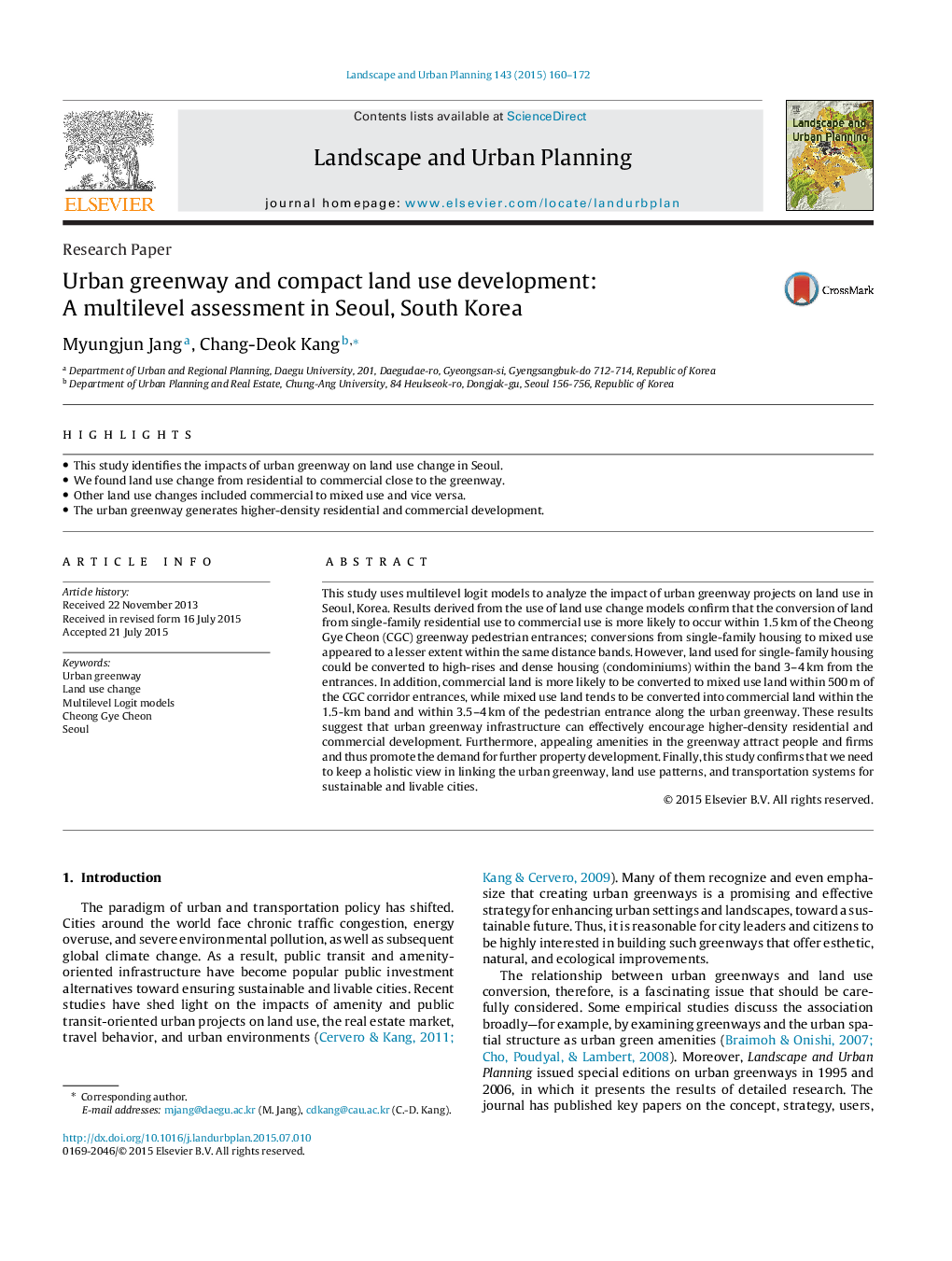| Article ID | Journal | Published Year | Pages | File Type |
|---|---|---|---|---|
| 7461025 | Landscape and Urban Planning | 2015 | 13 Pages |
Abstract
This study uses multilevel logit models to analyze the impact of urban greenway projects on land use in Seoul, Korea. Results derived from the use of land use change models confirm that the conversion of land from single-family residential use to commercial use is more likely to occur within 1.5Â km of the Cheong Gye Cheon (CGC) greenway pedestrian entrances; conversions from single-family housing to mixed use appeared to a lesser extent within the same distance bands. However, land used for single-family housing could be converted to high-rises and dense housing (condominiums) within the band 3-4Â km from the entrances. In addition, commercial land is more likely to be converted to mixed use land within 500Â m of the CGC corridor entrances, while mixed use land tends to be converted into commercial land within the 1.5-km band and within 3.5-4Â km of the pedestrian entrance along the urban greenway. These results suggest that urban greenway infrastructure can effectively encourage higher-density residential and commercial development. Furthermore, appealing amenities in the greenway attract people and firms and thus promote the demand for further property development. Finally, this study confirms that we need to keep a holistic view in linking the urban greenway, land use patterns, and transportation systems for sustainable and livable cities.
Keywords
Related Topics
Life Sciences
Agricultural and Biological Sciences
Ecology, Evolution, Behavior and Systematics
Authors
Myungjun Jang, Chang-Deok Kang,
